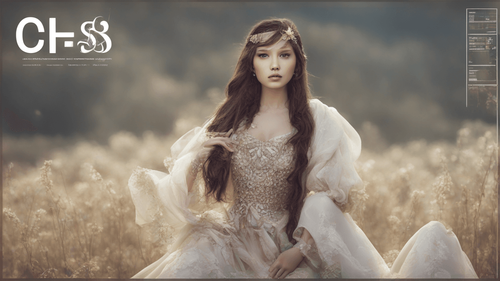
Introduction: Embracing the Evolution of Content Creation
In a world driven by visual communication, the synergy between text and images holds immense potential. Enter the realm of "texttoimage," a revolutionary concept that merges textual descriptions with stunning visual representations. This article delves deep into the magic of text to image conversion, exploring its applications, benefits, and the technology that powers it.
Text to Image Conversion: A Glimpse into the Future of Communication
In an era where attention spans are shrinking and visual content reigns supreme, the concept of converting text into compelling images has emerged as a game-changer. By harnessing advanced artificial intelligence and deep learning algorithms, texttoimage technology translates textual descriptions into lifelike visuals that captivate and engage audiences.
The Mechanism Behind the Curtain: How Texttoimage Technology Works
Understanding the Neural Architecture: LSI Keywords and Contextual Mapping
At the heart of texttoimage technology lies a neural architecture that comprehends textual semantics and translates them into visual elements. Latent Semantic Indexing (LSI) keywords play a pivotal role in establishing context, enabling the algorithm to select appropriate visual elements that resonate with the given text.
Artificial Intelligence and Generative Adversarial Networks (GANs)
The backbone of texttoimage conversion is built upon Generative Adversarial Networks (GANs), a subset of artificial intelligence. GANs consist of a generator and a discriminator that work in tandem to create images that are virtually indistinguishable from real visuals. This technology has opened doors to a world where words come alive as images.
Applications of Texttoimage Technology: Fueling Creativity Across Industries
Texttoimage technology is a versatile tool with applications spanning various industries. From marketing to education, its impact is far-reaching and transformative.
Content Creation and Marketing: Breathing Life into Concepts
In the realm of content marketing, texttoimage technology empowers creators to transform abstract concepts into tangible visual narratives. Complex ideas can be simplified, making them accessible to a wider audience, thereby enhancing brand communication and customer engagement.
Educational Aids and Learning Enhancement: Visualizing Knowledge
In education, texttoimage conversion bridges the gap between textual content and effective learning. Complex theories and historical events can be visualized, making learning not only informative but also engaging.
Entertainment and Gaming: Crafting Immersive Experiences
The entertainment industry embraces texttoimage technology to create immersive experiences. From video games to virtual reality worlds, descriptive text can now be translated into lifelike environments, captivating users on a new level.
Benefits of Texttoimage Conversion: Powering Creativity and Engagement
The fusion of text and images through texttoimage technology offers a myriad of benefits that extend beyond conventional communication strategies.
Enhanced Engagement and Shareability
Visual content has a higher likelihood of being shared across social media platforms, amplifying reach and engagement. Texttoimage technology enables brands to connect with their audiences more effectively and organically.
Efficiency in Expression and Communication
For writers, conveying intricate details can be challenging through text alone. Texttoimage conversion provides a tool for succinctly communicating information, leading to better understanding and retention.
Unlocking Creative Possibilities
Creativity knows no bounds when texttoimage technology comes into play. Artists, writers, and designers can collaborate to create visually stunning narratives that were previously limited by textual descriptions.
FAQs: Decoding the Intricacies of Texttoimage
How Accurate are the Images Generated by Texttoimage Technology?
The accuracy of the generated images depends on the quality of the input text and the underlying AI algorithms. As technology advances, the accuracy continues to improve.
Can Texttoimage Technology Replace Human Creativity?
Texttoimage technology is a tool designed to augment human creativity, not replace it. It aids in visual representation but relies on human ideation for original concepts.
Are There Copyright Concerns with Generated Images?
Generated images are often based on a combination of existing visuals, which can raise copyright considerations. Proper usage and adherence to copyright laws are essential.
How Does Texttoimage Technology Handle Ambiguity in Text?
Textual ambiguity can pose challenges, but advanced algorithms analyze context and select visuals that align most closely with the intended meaning.
What's the Role of LSI Keywords in Texttoimage Conversion?
LSI keywords provide context and semantic understanding, enabling the AI to choose relevant visual elements that resonate with the given text.
Can Texttoimage Technology Be Used for Historical Recreation?
Absolutely, texttoimage technology can be employed to recreate historical scenes and events, offering a visual window into the past.
Conclusion: Embrace the Evolution of Expression
In the dynamic landscape of content creation and communication, embracing texttoimage technology opens doors to a new realm of expression. The fusion of textual descriptions and captivating visuals transcends language barriers, engaging audiences on a visceral level. As technology continues to evolve, the magic of text to image conversion will only become more potent, redefining the way we share stories, educate, and captivate the world.